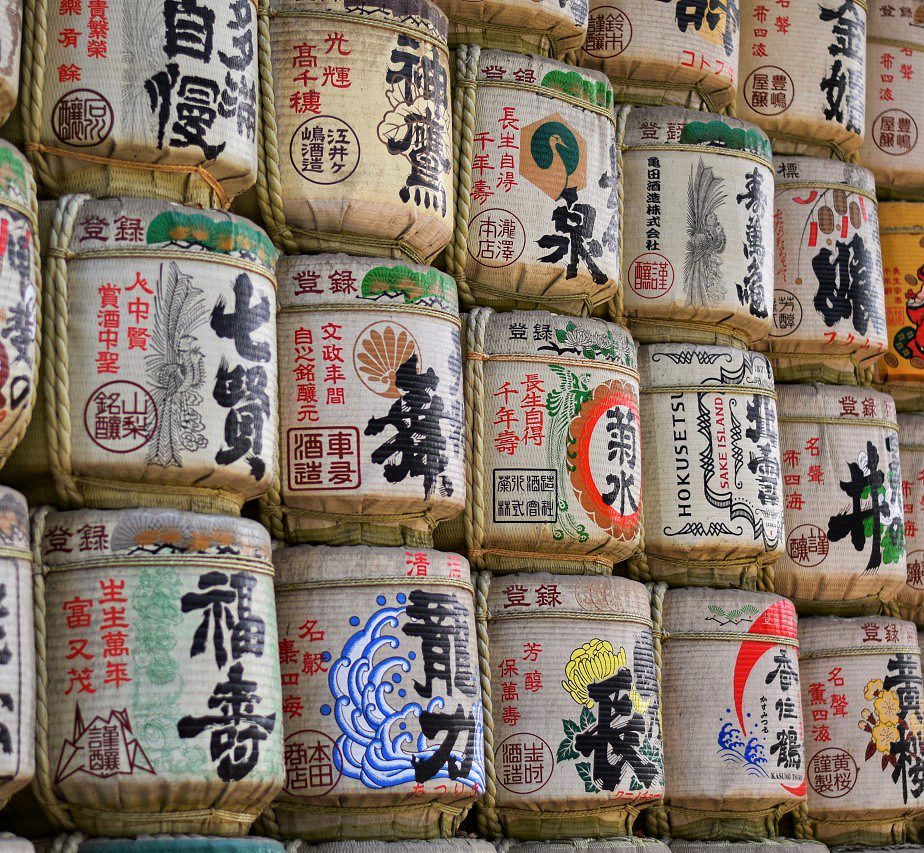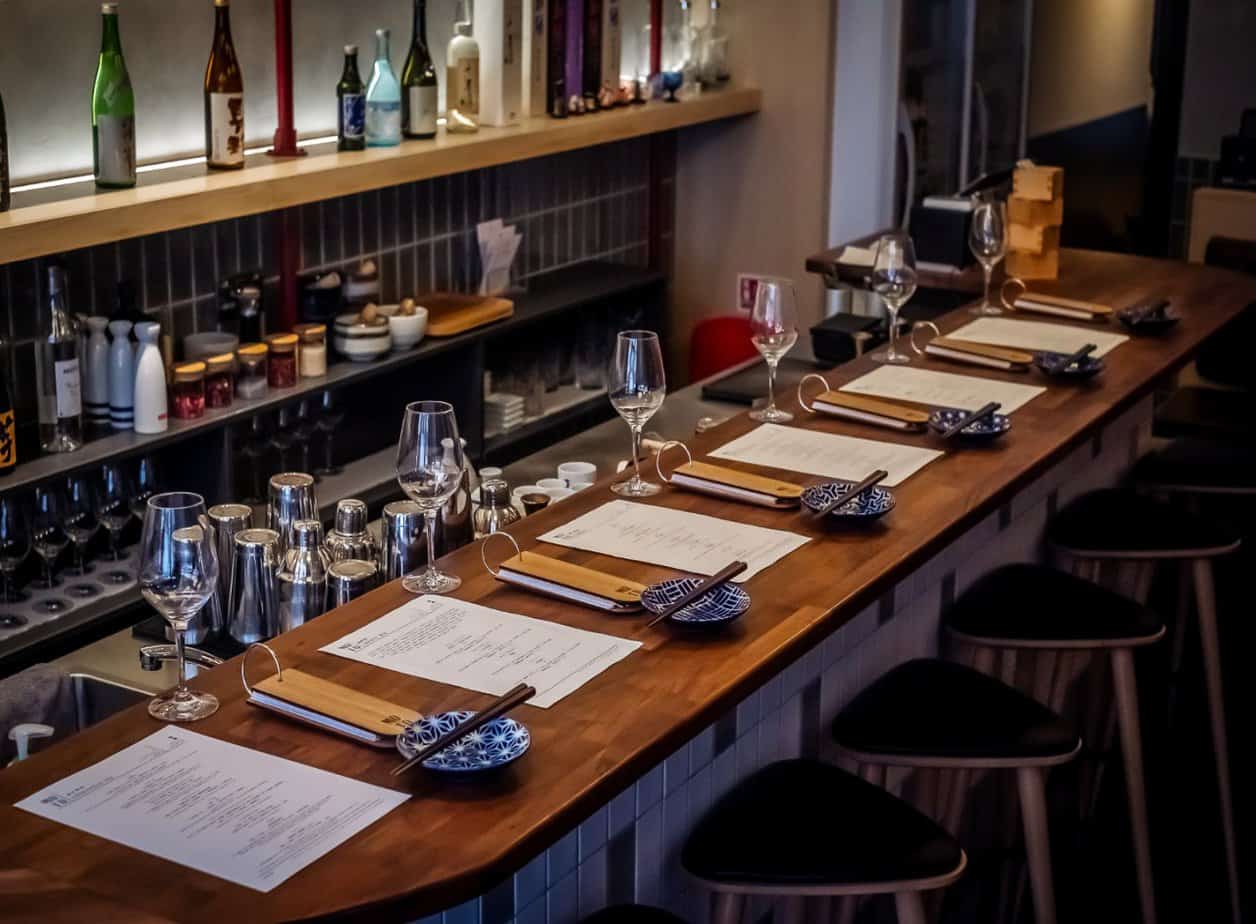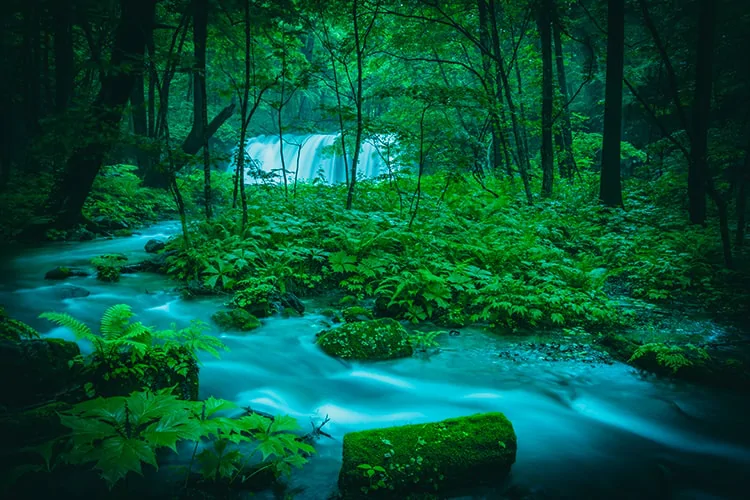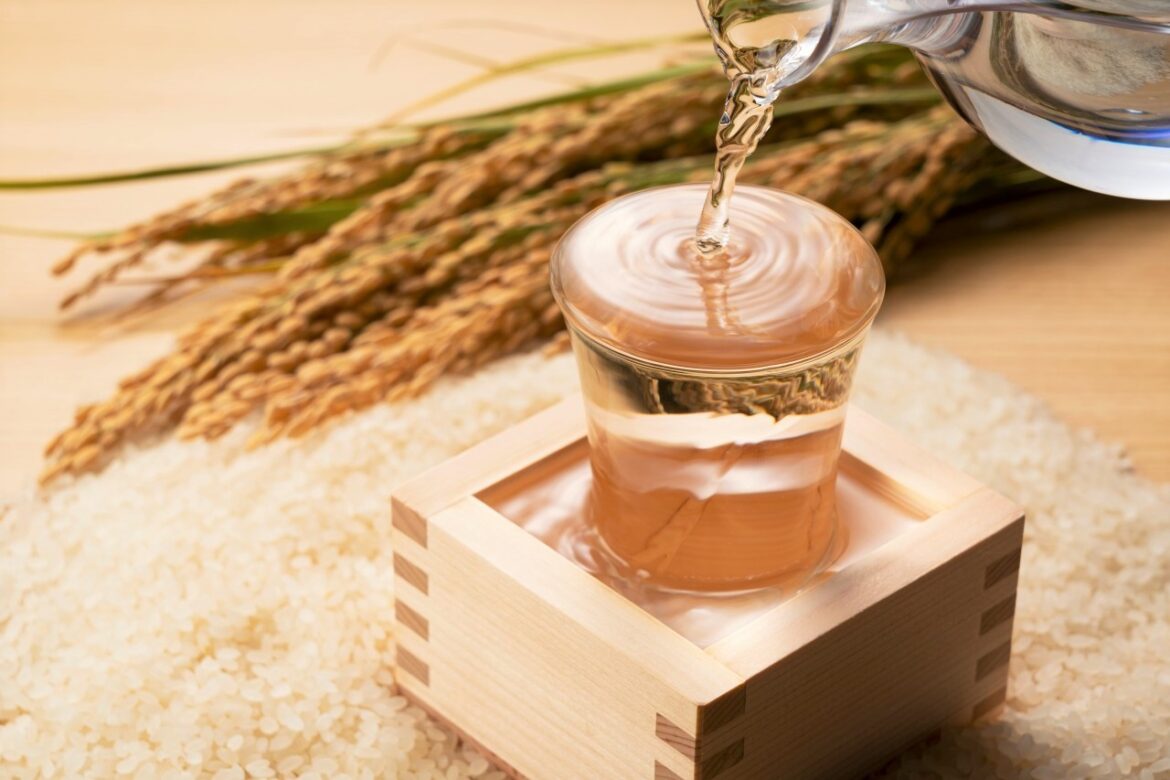Introduction: What is Sake?
Sake is a traditional Japanese alcoholic drink made from fermented rice and generally with an alcohol content between 13-17%. Japanese Sake, or Nihonshu as it is called in Japan, is often translated into English as “rice wine” but in fact, the production method is closer to that of beer. From its origins in ancient Japan to its modern-day production process, sake has been an integral part of Japanese life for generations. In this article, we will explore the different types of sake, common misconceptions, and how to enjoy this unique beverage. We will also discuss the traditional sake brewing process and how it has evolved over time to create a variety of flavors and styles. Finally, we’ll take a look at some of the popular types of Japanese sake available today and where to buy them in the UK.

Essential Ingredients & Production Methods Used
Japanese sake brewing is an intricate process that requires the perfect combination of ingredients and production methods. The essential ingredients used in sake brewing are sake rice, water, and Koji-kin. Rice is the main ingredient for making sake and it must be carefully selected to ensure the highest quality of sake. Water also plays an important role in sake brewing as it contains varying levels of minerals based on the region, and helps to extract flavor from the rice. It should be noted that Sake is 80% water, so you need high-quality water for high-quality sake. We’ll get onto what Koji-kin is shortly!
What rice is used to make Japanese sake?

Sake rice is different from the rice you eat for meals. Sake brewers use special rice called Sakamai instead, which shapes the taste profile of the sake, as Sakamai produces Umami-rich amino acids during the fermentation process. Sakamai have larger grains than general rice, and low levels of protein and fats which ensure the flavours are not overpowering. Although there are more than 100 varieties of Sakamai, 75% of sake rice comes from three main varieties called Yamada Nishiki, Gohyaku Mangoku, and Miyama Nishiki.

What is Koji-kin?
Koji-kin (scientifically known as Aspergillus oryzae) is a mold used to ferment soybeans, rice, or wheat, and to make alcoholic beverages such as sake and shochu. In the sake making process, Koji-kin is distributed over steamed sake rice in a heated room and left for a period of 2 or 3 days. Through the use of Koij-kin, the starch molecules of sake rice is broken down into sugars as the mold grows over the grains.
Sake production vs Beer production

Earlier we mentioned Sake production is closer to beer production than to wine production as like beer production, sake production requires multiple fermentation. The process of sake making differs however from brewing beer where enzymes contained in the barley break down the starch molecules and starts to convert them into sugars. Sake rice does not contain these types of enzymes found in barley, so Koji-kin is essential for making sake. Also, with sake production, starch is converted to sugar and the sugar is converted to alcohol simultaneously with the addition of sake yeast, in a unique process called “Multiple Parallel Fermentation” in contrast to the multiple sequential fermentation in beer production.
Different Types of Sake & Their Unique Characteristics

There are many different types of sake, each with its own unique characteristics. Junmai daiginjo, honjozo-shu, and junmai-shu are some of the most popular types of Japanese sake. Each type has its own distinct flavor profile and can be enjoyed in a variety of ways. Here is a list of the main types of sake:
- Futsushu – “Ordinary” Sake
- Junmai – No brewer’s alcohol added
- Honjozo – A small amount of brewer’s alcohol added
- Ginjo – At least 40% of the rice grain polished
- Dai ginjo – At least 50% of the grain polished
It should be noted that both Ginjo and Daiginjo can and often do use a little brewer’s alcohol depending on the Toji (Brewing Master). We will now go deeper and provide a full explanation of each type of sake in the following section.

Futsushu
In Japanese, Futsu means “ordinary” and as you may guess, Futsushu is the “standard” sake that can be considered the same level as table wine. It refers to any sake not in the special sake category like Junmai or Ginjo, so it’s pretty much everything that is not a Premium Sake. It’s the most consumed sake in Japan making up over 70% of the market and while it’s not fancy, don’t mistake Futsushu for being low quality. There are some great Futsushu sake out there, and some of the top sake breweries have a sake deliberately falling into the Futsushu category for sustainability reasons.
What is Premium Japanese Sake?
Rice polishing or specifically polishing the grains of sake rice before the production process begins, reduces any undesirable flavours in the sake created. As a rule of thumb, the more the rice is polished, the better the taste of the sake. Having said that remember that the quality of sake made is always down to the Toji (master brewer), and a highly skilled Toji can create a high quality sake even with lower polished rice. For the purpose of categorisation, Premium Sake needs to have 30% of the rice grain polished away.

What is Ginjo?
The next level of Premium sake is Ginjo, which has at least 40% of the grain polished away and 60% remaining. It’s a refined sake with fruity and floral aromas. What’s interesting about Ginjo is that until around 50 years ago, it was not widely available or produced, as the norm at the time was sweet sake. By polishing rice beyond 40%, sake brewers created lighter, drier and cleaner sakes. Nowadays, Ginjo sakes are increasingly popular and are known for easy drinking and excellent balance.
Daiginjo Sake
Then comes the highest level of Premium Sake which is Daiginjo, where 50% of the grain has been polished away. Daiginjo Sake is elegant and rich in character, and the sake of choice for special occasions. Not only do they use the best rice at the highest polishing rate but they also show off the top skills of the Toji, who take additional special care of Daiginjo sake during the production process.
Junmai
This is sake brewed using just rice, water, koji-kin and sake yeast. There are no other additives such as brewer’s alcohol. For this reason, Junmai is the “pure rice” sake. As there is no brewer’s or distilled alcohol, Junmai sake is robust and juicy. Being Junmai is not indicative of superior sake, however, as adding small amount of distilled alcohol can change and enhance flavour profiles and aromas. The Junmai classification used to mean that 30% of the rice grain was polished away but now any degree of polishing is accepted.

Honjozo
Contrasting with Junmai, Honjozo sake makers add a little distilled brewer’s alcohol, to create a lighter texture and cleaner flavour profile. It should be pointed out that the added alcohol is not used to fortify the sake and make it stronger. Instead it makes the sake more refreshing. Honjozo does retain the polishing ratio where 30% of the rice grain is milled away, with 70% remaining. Classic Honjozo is dry and can be enjoyed at a variety of temperatures.
Now that you know the main types of sake, it’s time to reveal that you can find combinations of these sake like Junmai Daiginjo, which is known for it’s sophistication and often used for gifting. As a general rule, Junmai Daiginjo are always served chilled. In the near future, we’ll be creating articles with more examples of each type of sake chosen by sake experts in the UK.
Special Types of Japanese Sake
- Sparkling Sake – It’s becoming increasingly popular in recent years. It’s easy to drink and has a lower alcohol content than normal sake. The bubbles are created as the sake is bottled before the fermentation process is complete. While flavours vary, generally it’s sweet with this sweetness coming only from rice with no added sugar.
- Nigorizake – Cloudy sake that still contain rice solids not fermented. Nigori sake are only coarsely filtered and tend to be creamy and sweeter than clear ones.
- Namazake – Most sake is pasteurised twice however Namazake is only pasteurised once or not at all, and tastes fresher and fruitier. It needs to be refrigerated and consumed quickly.
- Koshu – This is aged sake and was previously the luxury sake of choice, with Jukusei Koshu being sake aged three years or more. Flavours are darker, and Koshu has more earthy or woody tones depending on how long the sake was aged.
- Jizake – Can be translated as “local sake” and is produced by a microbrewery or artisanal producer. This means mass-produced national brands are not included, and the sakes have profiles that reflect regional characteristics and climates.
- Amazake – This is not a true sake, but a traditional, sweet, thickened low alcoholic drink often served at festivals or at shrines during the winter months. Some Amazake contain no alcohol and for this reason you may even see recipes for Amazake as a healthy fermented rice drink.
Common Sake misconceptions

Needs to be drunk warm
Sake is one of the more unique alcoholic drinks available as most can be enjoyed at many different degrees of temperatures. In fact it’s more likely that you should be careful not to serve some Ginjo sakes at higher temperatures as they have delicate flavours.
Sake gives you a hangover
Compared to other alcoholic beverages, sake has no sulfites, low histamines, and 1/3 the acidity of wine. These three factors are known to lead to hangovers.
It’s a spirit.
Usually sake has alcohol content of around 15% and even the strongest sake out there is just over 20%. It may appear like a spirit because sake is often a clear liquid or because it’s served in small glasses. It may be misconceived in this way because there is a throat-burning sensation with people incorrectly downing heated cheap sake like it’s a shot.
Saki vs Sake?
Possibly this is more of a pet peeve but we feel this should be pointed out. It’s not pronounced “Saki” as this is a girl’s name. The correct pronunciation is “Sah-keh”.
How to enjoy drinking Sake

Serving Sake
First, it is customary to serve your friends when drinking sake, and not to serve yourself. It means you have to keep an eye on how much sake your friends have left in their cup and vice versa. Incidentally, the traditional small sake cups are named Ochoko, and sake pitchers are named Tokkuri. When heating up sake, you can place Tokkuri in water that has been boiled for several minutes.
What temperature is best for drinking Japanese Sake?
One of the great things about sake is that it’s a truly versatile drink. You can serve most sake at a variety of temperatures to bring out hidden aspects, and the best method is to start experimenting to see what you enjoy. A rule of thumb is that highly aromatic Ginjo and Daiginjo-style sakes are served chilled. There are even names in Japan for how chilled the sake is. Yuki-hie is “snow-chilled” at 5°C, Hana-hie at 10°C is cherry blossom chilled, while Suzu-hie is pleasantly chilled at 15°C. Meanwhile for those who wish to enjoy sake at warmer temperatures, the subtle aromas of Junmai, Honjozo, and Futsu-shu will be revealed and emphasized when brought to room temperature and above.

Storage of Japanese Sake
The main things to avoid when storing sake are to keep your sake away from direct sunlight and store them in a dark and cool place. You’ll see that most Japanese sake bottles are brown, green, or blue, since the darker the colour, the more it cuts UV rays from reaching and affecting the sake. As mentioned above, if you have Namazake, you will need to refrigerate it immediately, and since some Ginjo and Daijingo are delicate, it is best practice to store them in the fridge, too.
Best before dates
The recommended drinking window for sake is one week once the sake bottle is opened, as sake oxides slower than wine. Having said this, sake will taste it’s best within the first two or three days of opening. Meanwhile, unpasteurised Namazake should be drunk as soon as possible after opening.
When it comes to how long unopened sake bottles keep for, regular pasteurised sake is commonly kept in stores for around 12 months. Although there is no expiry date, sake should be drunk within 2 years of bottling. The exception is Namazake which should be drunk within 6 months.
Pairing Japanese Sake with Food

Japanese sake has long been a favorite of many, but pairing it with the right food can be a challenge. Whether you are looking for the perfect balance to enhance your dining experience or just want to experiment with different food and drink combinations, understanding how to pair Japanese sake with food can be an important skill. Here are some basic rules that you can use when selecting the right dishes for your next meal.
- Light and dry sake pairs wonderfully with sashimi and sushi
- Light and sweet sake works with fish, shrimp, and lightly fried dishes
- Rich and dry sake goes well with hearty meat dishes
- Rich and sweet sake complements most traditional Japanese dishes
The Best Places to Buy High Quality Japanese Sake

If you’re looking for the best places to buy high quality Japanese sake online, then you’ve come to the right place. We’ll introduce some of the best places to buy Japanese sake online and in store in the UK and what makes them stand out from the rest. We’ll also discuss some tips on how to choose the right type of sake for your needs and budget. So read on and find out more about where to get your hands on some delicious Japanese sake!
Japanese Sake Shops Online
There are 3 online Sake Shops in the UK that are 100% focused on providing Japanese Sake and can deliver to your door:
- London Sake – Provides a wide range of premium and craft Japanese sake. Buy from their sake shop, gift a sake tasting set, or sign-up to one of their bottle subscriptions.
- Tengu Sake – Delivers premium sake anywhere in the UK from five award-winning breweries. All bottles come with English explanations, including recommended drinking temperatures.
- Sorakami – Offer member perks for subscriptions and aim to demystify the world of sake with their Sake guide & tasting notes. You can also browse and buy from their bottle shop.
The first Sake Brewery in the UK
Kanpai London is proud to be the UK’s very first sake brewery! They craft British sake using traditional Japanese techniques, and continue to experiment to allow the natural characteristics of each ingredient to shine. You can visit Kanpai London in Peckham and try their sake from Wednesday to Sunday. They also offer online shopping and delivery across the UK.
Where to buy Sake in-store
There are several Japanese Supermarkets in London where you can buy sake. We’d recommend checking out our Japanese Supermarkets article to see which supermarket is closest to you and which one has the sake you’re looking to try next.
How to learn more about Japanese Sake?

You may find that you want to discover more about the world of sake and its fascinating history. Here we will introduce some excellent online resources, and Japanese Sake Classes or Sake experiences you can join in London.
Podcasts dedicated to Japanese Sake
The first sake podcast we got into was the Sugidama Podcast. The podcast is put together by Alex who is a Kikisake-shi (Sommelier of Sake) and IWC Sake judge. In each episode, Alex expands the audiences awareness of Japanese sake. There are early episodes explaining what sake is as well as talking about common misconceptions. The more recent episodes introduce interviews with special guests and key figures in the world of sake. This is where you can hear the stories behind sake breweries like Tedorigawa in Ishikawa, or how Kanpai London got started.
Japanese Sake Classes and Experiences in London
For those who are regular readers of our Japanese Events in London monthly calendar, you’ll know that there are several classes, experiences and events where you can learn more about and enjoy Sake.
First, Pantechnicon has Sake experiences available throughout the year such as their Sake Supper club. They hold a monthly Introduction to Sake event as well, hosted by Natsuki Kikuya, who is a Sake Samurai (recognised by the Japanese government) and an IWC Co-Chair. The event includes 4 sakes with Japanese snacks and 6 Maki rolls to share, and you can find more details on the Pantechnicon Experience page.
If you want to learn more about the history of sake and its production, along with some sake tasting and pairing with cheese and nibbles, we would recommend West London Wine School’s Sake and Cheese Pairing-Evening , Introduction to Sake Tasting and Seasonal Sake Tasting .
We hope that this article on Japanese Sake has been helpful and provided you with the essential knowledge you need to know about sake,. We’ll be creating more sake articles in the near future including our sake recommendations for beginners. In the meantime, if you are looking for more articles about Japan or Japanese culture, you might be interested to check our Japanese culture section.


